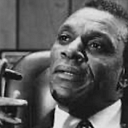Member-only story
How To Respond To A Potential Pandemic
Gerald Ford, & the 1976 Swine Flu Threat
Time For Some Action
Back in early 1976, as President Gerald Ford was battling Ronald Reagan for the Republican nomination for President of the United States, a potential swine flu pandemic arrived in the U.S.
It is, on some level, a lesson in both of the problems and concerns in the U.S. today: overreaction by the government and failure and ineptitude by the government.
The pandemic didn’t actually materialize despite the fact that the government responded aggressively and quickly. Whether it was politically motivated or not, the Ford administration came across as competent and engaged and a look at how the various parts of government functioned reveals a much freer bureaucracy back then not beholden too much to an autocratic leader or the daily spins of the endless and almost needless media coverage we see today.
The affair began on Feb 4, 1976 when David Lewis, a U.S. Army recruit from Ashland Falls, MA, collapsed and died at Fort Dix, N.J. of what was soon determined to be — swine flu. Immediately, the Walter Reed Institute on Research tested 241 of their personnel at Fort Dix, most of them new recruits.
